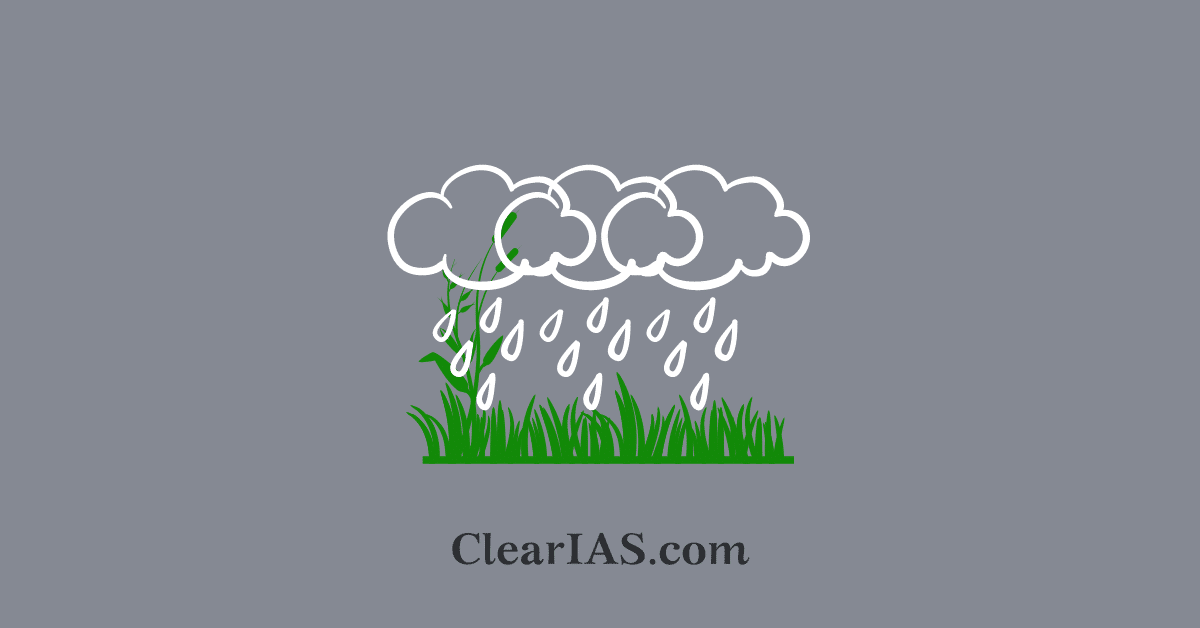
Why is India witnessing unseasonal rainfalls yet again? What are the reasons for to other than climate change? How is it going to affect the monsoons? The agricultural sector is extremely vulnerable to such changes in climate. Read here to learn more about the impact of unseasonal rains in India.
Farmers are very concerned about their crops that are ready to be harvested as well as the produce that is lying in the mandis due to the recent spell of unseasonal rains in various parts of India.
The vulnerabilities of our agriculture industry have once again been brought to light by the unseasonal rains in India. Unseasonal rains, while typically regarded as a blessing, can be a burden for farmers who are already suffering from the effects of low crop prices, increased input costs, and shifting weather patterns.
This may have a domino effect on the inflationary trend as a whole. Unseasonal rainfall affects more than just the agriculture industry; it also affects other economic sectors.
Unseasonal rains in India
Unseasonal rains have been occurring in numerous areas of India. However, why the weather is abruptly altering this month?
According to scientists, Western Disturbance is a key factor in this weather trend. The incidence occurs annually, but not always under the same conditions as this year.
- This time, cyclonic circulation, or cyclonic winds, have developed across Haryana and Punjab as a result of the Western Disturbance.
- From north to west India, rain is falling as a result of these cyclonic winds.
- Due to anticyclonic activity in southern India, the weather changed.
El Nino will be one of the factors contributing to this year’s summer’s severity compared to previous years due to the weather shift.
- El Nino may cause the global rainfall pattern to worsen, not just in India.
- The impact of global warming is increasingly evident not just in India but in many other nations as well.
In recent months, hailstorms are also being observed unleashing havoc on the standing crops.
- The rainfall and the storms were caused by multiple western disturbances, other associated weather systems, and many troughs.
- These are extended low-pressure areas, formed due to the interaction of the western disturbances and associated systems with winds blowing in from the east, mainly the Bay of Bengal.
- A warming Arabian Sea could also be responsible for the intense storm activity and rain.
- The Indian Meteorological Department also cited a strong subtropical westerly jet stream as a reason for the storm activity.
These unprecedented weather conditions will most probably be followed by premature hot temperatures as well.
Impact of unseasonal rains
Unseasonal rainfall affects more than just the agriculture industry; it also affects other economic sectors.
- The standing crops and the post-harvest crops have been impacted which can lead to a rise in prices of perishable supplies such as vegetables and fruits.
- Due to the interruption brought on by unseasonal rainfall, the construction industry may experience an additional increase in the cost of essential raw materials like steel and cement.
- The price increase of basic commodities can also affect people’s spending habits, which can decrease demand for non-essential products and services as a whole.
- Unseasonal rain can also have a negative social impact, particularly on the most vulnerable members of society like small farmers, laborers who are paid daily, and migrant workers.
Steps to tackle the issue
There is a need for a multifaceted approach that includes both short- and long-term actions to solve these concerns.
- The central government and the states can forgo farm loans shortly, compensate farmers for lost crops, and offer seeds and fertilizer at discounted prices.
- As a short-term solution, the Minimum Support Price might likewise be raised.
- Long-term structural changes in the agriculture industry are required to increase its adaptability to shifting weather patterns.
- This might entail taking steps to encourage crop variety, encourage the use of cutting-edge agricultural techniques and technology, and improve the infrastructure of the supply chain to decrease waste and post-harvest losses.
- Additionally, the topic of unusual showers draws attention to the bigger problem of climate change.
- India must be proactive in attempting to lessen its effects. The Centre, States, civil society organizations, and the commercial sector must collaborate on this.
Government initiatives
The government has launched several initiatives such as the
- Pradhan Mantri Fasal Bima Yojana (Prime Minister’s Crop Insurance Scheme)
- Pradhan Mantri Krishi Sinchai Yojana (Prime Minister’s Agricultural Irrigation Scheme) aims to boost irrigation infrastructure and promote water-use efficiency.
- The Soil Health Card Scheme provides farmers with a comprehensive report on the nutrient status of their soil and recommends corrective measures.
Such initiatives along with long-term and short-term approaches can help farmers optimize their use of water resources, improve crop yields, and reduce the risk of crop failure due to droughts or water scarcity.
- These steps can also help farmers plan their use of fertilizers, reduce wastage, and improve soil health.
Way forward
Extreme weather conditions have increased in the past 50 years and are expected to further increase in the next 50 years. Thus, it entails serious actions of mitigation.
While issues like crop damage due to hail cannot be solved, water-resistant crops are being pushed as the solution for excessive of unseasonal rains.
As of such bouts of weather are limited to certain geographic areas, hence food security of the whole nation is not threatened to an extent.
The central and state governments also need to work more closely together. While the States can take the lead in carrying out the measures on the ground, the Centre can help the State governments financially and technically to address the concerns of farmers.
-Article written by Swathi Satish






Leave a Reply